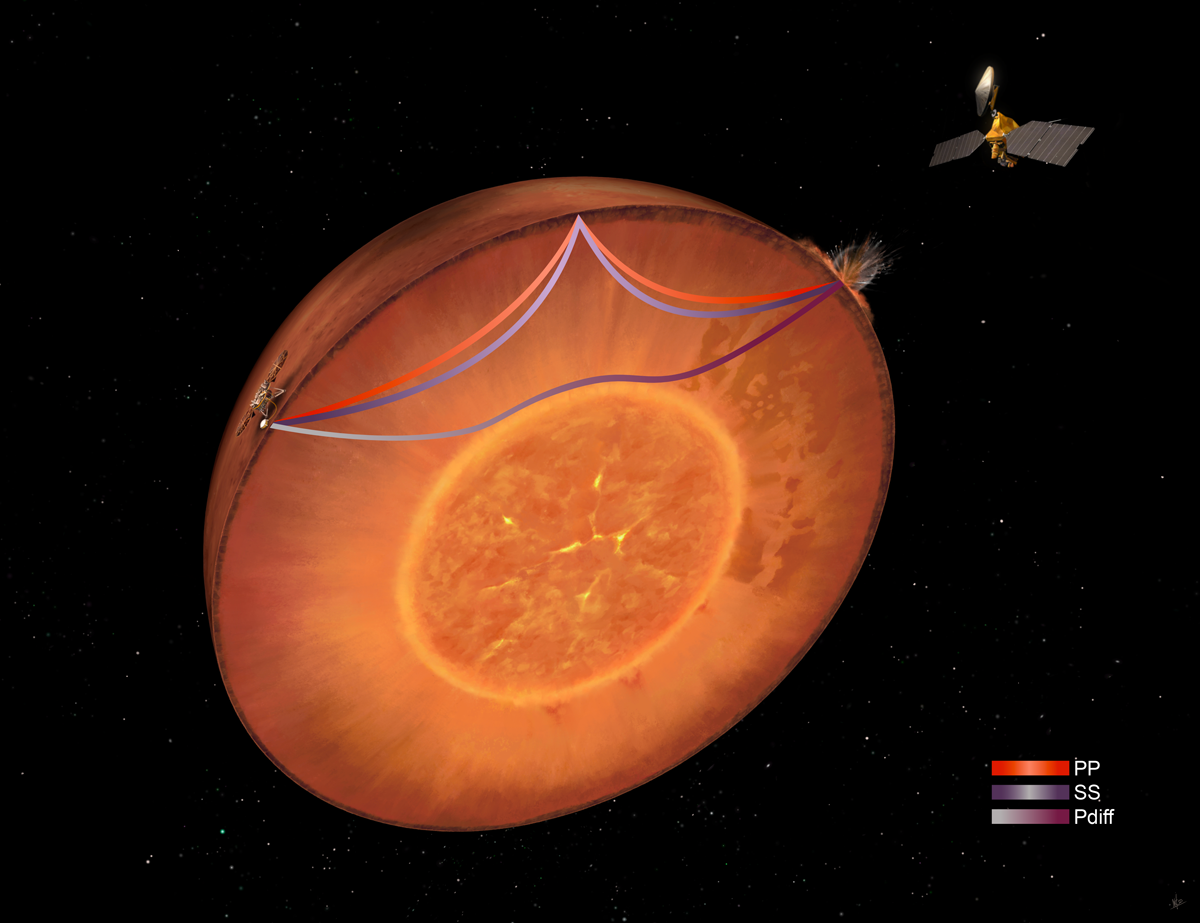Source: Geophysical Research Letters
NASA’s InSight lander (Interior Exploration using Seismic Investigations, Geodesy and Heat Transport) launched in 2018 with the goal of peering deep into Mars’s interior for the first time to gain important information about the planet’s structure and formation. To help with this task, the lander is equipped with a sensitive seismometer that allows it to detect subtle marsquake vibrations. By recording the way these vibrations are reflected and bent as they travel through the planet, InSight has helped scientists map the layout of Mars’s crust, mantle, and core. Recently, an unusual series of vibrations provided an opportunity for even deeper understanding.
In a new paper, Durán et al. describe one of the largest—and farthest from InSight’s location—seismic events recorded on Mars. It is the first such event with pressure waves (P waves) that reached into the lower mantle more than 800 kilometers beneath the planet’s surface and all the way to the core, where they were diffracted. After analyzing the vibrations, the authors concluded that the event, which turned out to be an impact, occurred near Mars’s Tharsis volcanic plateau, on the opposite side of the planet from InSight, in agreement with satellite images showing the impact site.
The depth of the detected vibrations allowed the researchers to constrain the structure of Mars’s lower mantle in more detail than has previously been available. They found that the lower mantle appears to be more variable, in terms of both its temperature and composition, than suggested by previous seismic models. However, they say, it will require more data to determine precisely how the thermal and chemical makeup of the lower mantle varies, and why. (Geophysical Research Letters, https://doi.org/10.1029/2022GL100887, 2022)
—Rachel Fritts, Science Writer

